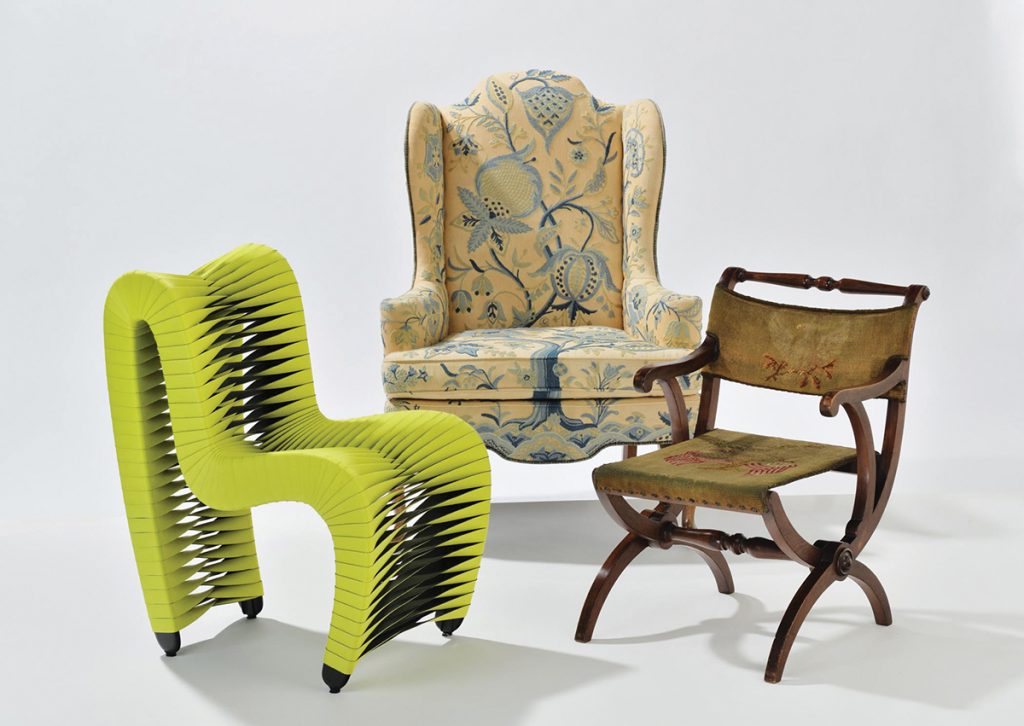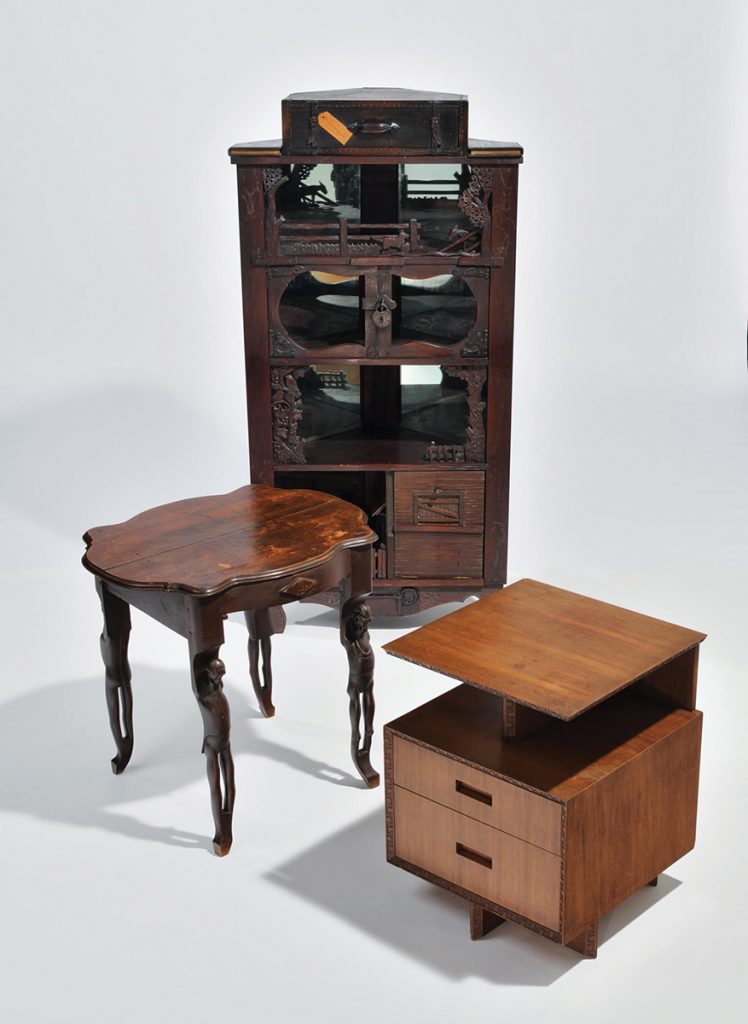A new exhibition with more than 40 pieces explores the history of the Tar Heel state’s unique furniture making legacy
by Hampton Williams Hofer

From the loading docks in High Point to the pinewood forests in the coastal plains, the legacy of the home furniture industry is a centuries-old, fundamental piece of North Carolina’s economy and identity.
A new exhibit at the North Carolina Museum of History tells this story. Furniture: Crafting a North Carolina Legacy traces the unique history of more than 40 illustrative pieces and delves into the communities of crafters who established our state as an international leader in home furnishings.
The exhibit, which opens this month, travels from colonial to modern times, and from the backyard shops to the mechanized factories that continue to help drive North Carolina’s economy. “I hope visitors will find a new appreciation for furniture,” says Michael Ausbon, curator of decorative arts for the NCMH and curator of the exhibit.
“When we’re hurrying around in the morning trying to get clothes out of a chest of drawers, we aren’t thinking about who made it, or where it came from. But a person put it together, and their history and culture are a part of the furniture.”
Each of the featured pieces highlights a unique history. One of them is a corner cupboard made by Tilden J. Stone, a master furniture-maker born in Thomasville in 1874, who was highly skilled in whimsical and exotic carvings. Stone was known for making pieces like sideboards with legs carved to resemble shotguns so realistic one would try to pick them up.
This corner cabinet is adorned with intricately carved birds, horses, cows and snakes. On top sits a trompe-l’œil suitcase. “It all looks like someone was just there,” says Ausbon.
“It’s uncanny, the work that Stone did. So much of his work stayed unnoticed in Lenoir — where he lived most of his adult life — because he made mostly custom pieces for local clients who never sold them.”
The exhibit isn’t only the old-timey stuff. Ausbon was sure to bring in modern touches, like a seatbelt chair by Phillips Collection, a global icon in organic contemporary furniture and decor that stocks its vast collection in a 400,000-square foot distribution center in High Point.
The chair consists of dozens of bright seatbelt straps woven onto a wooden frame, reinforced with metal, creating a stiletto heel profile. (Fun fact: The one in the NCMH’s exhibit is a replica of chairs used in a scene in The Hunger Games film.)
Spanning 10 sections, the 3,500-square foot exhibit also includes videos, photos, pieces to touch and explorations of the furniture-making process. Visitors can see the difference between wood samples and learn about the upholstery stuffing process (which at various times included materials like Spanish moss, feathers and animal hair). There are desks to sit behind, and even a time-mounted clock where visitors can punch out and take their time cards home.
“The community effort behind the early furniture industry was huge,” Ausbon says. “Local families saw a way to make money, friends formed businesses together in their backyards and community members all supported each other.”
The exhibit nods to that group effort by showcasing the roles of those who worked behind the scenes, notably the women of the industry, who ran companies while men were at war or fashioned furniture while male crafters got the notoriety.
The industry thrived as railroads expanded. The exhibit shows how factories in High Point built their loading docks level with the train tracks, so they could roll the furniture right off the factory floor. North Carolina had shipped out over 30,000 train carloads of furniture by the 1930s.
Even now, in the age of mass production, trucks and international shipping, High Point remains a furniture mecca, with the biannual High Point Furniture Market — the largest home furnishings industry trade show in the world — bringing some $6.7 billion a year to the local economy in what is the state’s single largest money-making event.
The exhibit also includes a note on sustainability and conservation. Part of what first drew the furniture industry to North Carolina was the vast forests of oak, pine and sweetgum trees, but by 1922, 300,000 acres of timber had been clear-cut. In recent decades, there has been a cultural shift around the value of and connection to furniture. A century ago, handmade furniture pieces were considered priceless heirlooms, passed down within families.
(Ausbon has stories of families coming to blows over a beloved piece, with bad blood carrying on through several generations.) Out-of-date furnishings would have been relegated to less important areas, like from the front of the house to the back.
Unused furniture might have been sold at estate sales, broken up for firewood, or, for someone in debt, even sold on the courthouse steps. But today, according to the EPA, some 12 million tons of furniture are thrown away annually nationwide. “These days, fewer people value the family connection and appreciate antiques, and feel these older pieces just don’t fit into our modern lifestyles,” says Ausbon.
To that end, the exhibit urges upcycling. “Maybe you don’t like your mother’s brown chest of drawers,” Ausbon says, “but you can paint it or change the drawer pulls, and keep the heritage of the piece.” To prove his point, Ausbon bought what he describes as “an old, junky piece of furniture” from a thrift store and gave it to local artist Cornelio Campos to paint.
Campos transformed the chest in a burst of color that depicts the history of his family, which immigrated from Mexico to North Carolina, using sweeping landscapes and religious symbolism. “It shows people what you can do,” Ausbon says.
Across time, styles and crafting methods, what remains is the continuity of function. We still need places to sit or to store our belongings — but as we use our furniture, maybe the exhibit will give us an appreciation for its bigger role in our culture and the resources and effort that went into creating it for our home. “It’s about connection,” Ausbon says, “looking at a piece and thinking about the story of it, what happened and how it came to be.”
This article originally appeared in the September 2023 issue of WALTER magazine .





